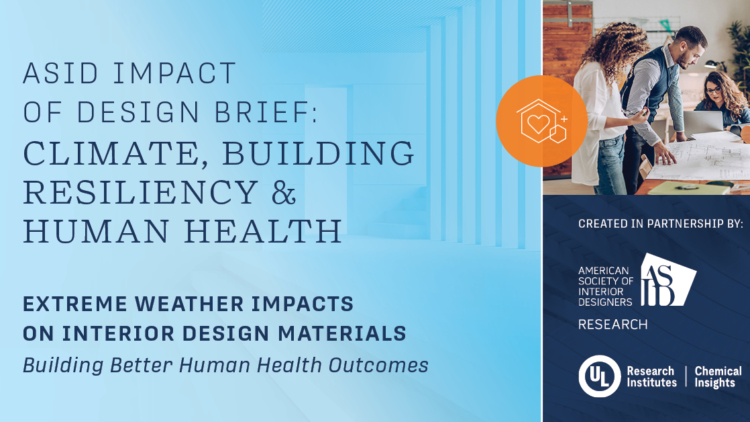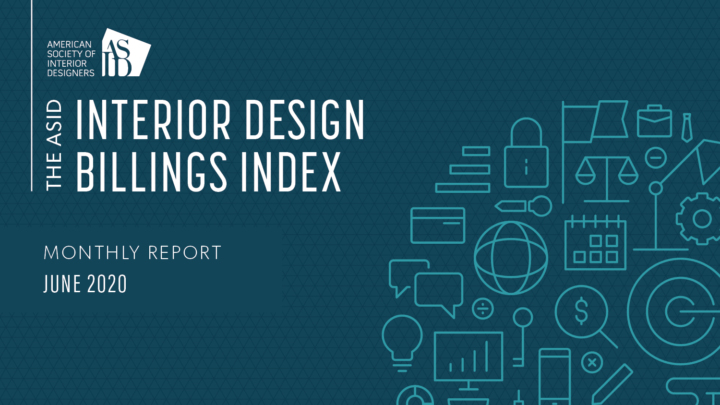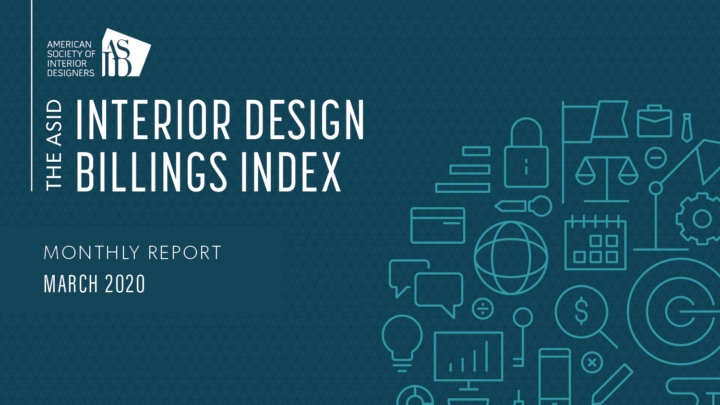ASID Impact of Design Brief: Climate, Building Resiliency, & Human Health

The worldwide chemical landscape, viewed from the perspective of pollution and exposure pathways, has experienced a 40-fold increase in chemical production in the last century, and the rise in synthetic products coupled with the focus on airtight buildings to conserve energy has led to a rise in volatile organic compounds (VOCs), semivolatile organic compounds (SVOCs), particulate matter (PM) and chemical related indoor air quality (IAQ) issues, resulting in building-related illness, litigation and leasing problems. Additionally, an increase in weather-related disasters, warmer temperatures, and changes in precipitation have increased ground ozone, mold, and pathogens. Evolving environmental conditions, particularly those related to climate change, are impacting building materials and increasing the risks to human health.
In response to the growing body of knowledge on the impact of materials on indoor air quality and human health, new rating systems, product declarations statements, protocols and regulations have been introduced. Unfortunately, the increase in extreme weather events has created new challenges, beyond carbon emissions and changed the way materials behave in these new environments.
Once equipped with greater awareness, interior designers can drive market transformation collectively towards healthier spaces. Interior designers have an opportunity to reduce indoor pollution and achieve better building resiliency by proactively incorporating design measures that (1) evaluate potential impacts from extreme weather events and (2) prioritize the selection of materials, finishes, and furnishings that minimize risks to human health.
Interior designers have the opportunity to improve building resiliency and thus mitigate some of these climate-related outcomes for occupants.
- Step 1 | Use an integrative design process. Bring the owner, design team and additional experts and/or stakeholders together early in the design process to establish goals, set priorities and identify occupant risks.
- Step 2 | Proactively evaluate potential impacts. Prioritize the materials, finishes and furnishings that minimize risks to human health to reduce indoor pollution and achieve better building resiliency.
- Step 3 | Convey strategies and assess outcomes. Communicate to ensure alignment, engage stakeholders and demonstrate results for greater transparency and trust.


